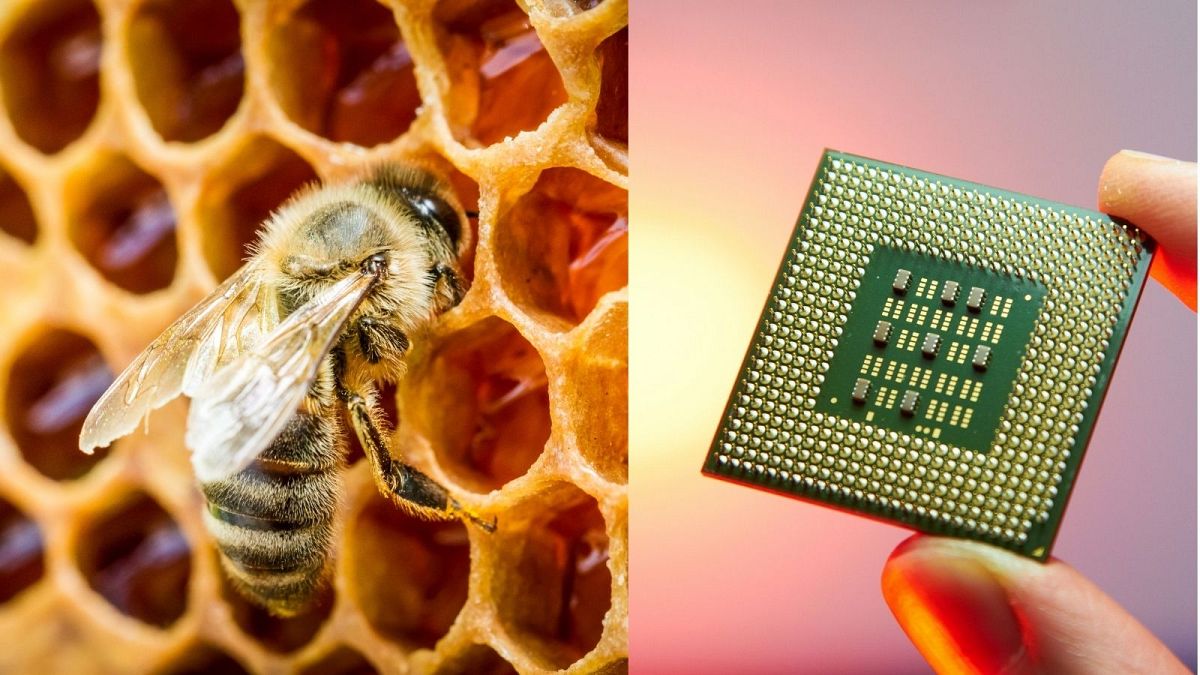Scientists are exploring biodegradable and renewable solutions to power super-fast computers, and honey is a promising option.
Could honey offer a solution to the global shortage of semiconductors - and help cut down on electronic waste in the process?
A new study from the United States suggests that honey could be used to make an environmentally friendly computer chip that can process and store data by mimicking the human brain.
Hailed by some as the future of computing, so-called neuromorphic systems are much faster and use much less power than traditional computers.
Now Washington State University (WSU) engineers have demonstrated one way to make them more organic, too.
They found that honey can be used to make a memristor - a component similar to a transistor that can not only process but also store data in memory.
“This is a very small device with a simple structure, but it has very similar functionalities to a human neuron,” said Feng Zhao, associate professor of WSU’s School of Engineering and Computer Science and corresponding author on the study.
“This means if we can integrate millions or billions of these honey memristors together, then they can be made into a neuromorphic system that functions much like a human brain”.
Imitating the human brain
The findings were published in last month’s issue of Journal of Physics D but were only promoted by Washington State University this week.
For the study, researchers processed honey into a solid form and sandwiched it between two metal electrodes to mimic a human synapse - the small pocket of space between two neurons where information is passed from one to the other.
They found that the biodegradable honey memristor was able to emulate human synapses and their ability to switch on and off very quickly while retaining some information.
They built the honey memristor to be about the same width as a human hair.
Going forward, the team plans to develop them on a nanoscale, about 1/1000 of a human hair, and bundle many millions or even billions together to make a full neuromorphic computing system.
The human brain has more than 100 billion neurons with more than 1,000 trillion synapses, or connections, among them.
Each neuron can both process and store data, which makes the brain much more efficient than a traditional computer, and developers of neuromorphic computing systems aim to mimic that structure, the team explained.
Several companies, including Intel and IBM, have already released neuromorphic chips which have the equivalent of more than 100 million “neurons” per chip, but this is not yet near the number in the brain.
‘Renewable and biodegradable’
Zhao and his team are also looking into using proteins and other sugars such as those found in Aloe vera leaves, but he sees strong potential in honey.
“Honey does not spoil,” he said. “It has a very low moisture concentration, so bacteria cannot survive in it. This means these computer chips will be very stable and reliable for a very long time”.
The researchers say the honey memristor chips they developed should also tolerate the lower levels of heat generated by neuromorphic systems, which don’t get as hot as traditional computers.
Importantly, honey memristors would help reduce electronic waste by “creating renewable and biodegradable neuromorphic systems,” Zhao said.
“When we want to dispose of devices using computer chips made of honey, we can easily dissolve them in water,” he said.
This also means, he cautioned, that just like conventional computers, users will still have to avoid spilling their coffee on them.



